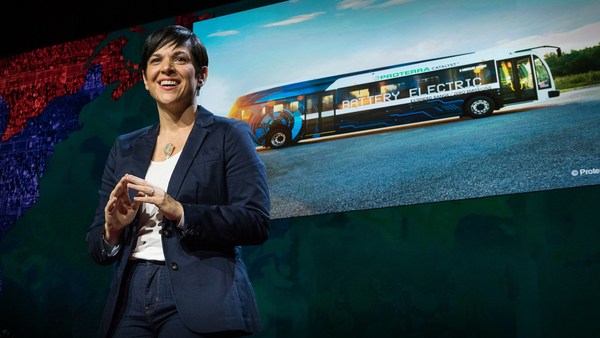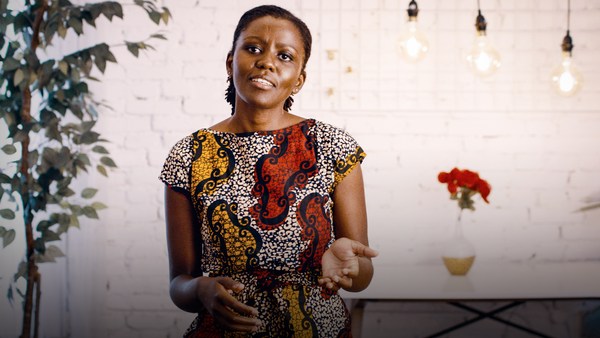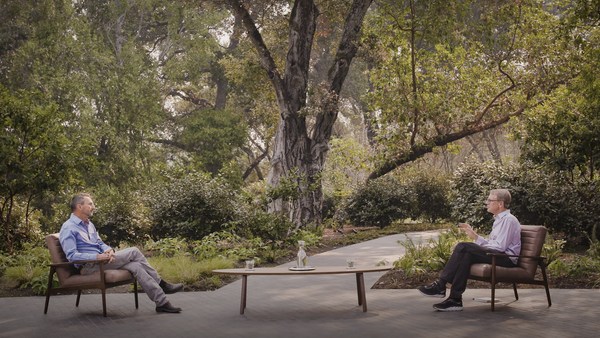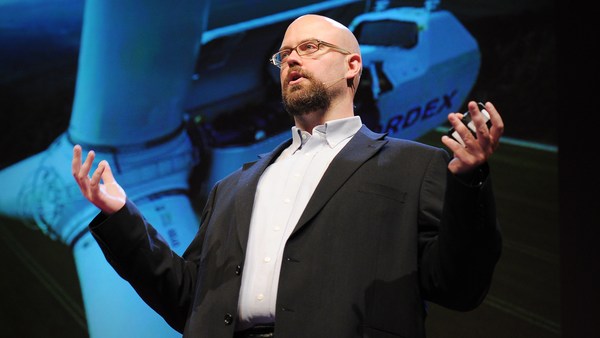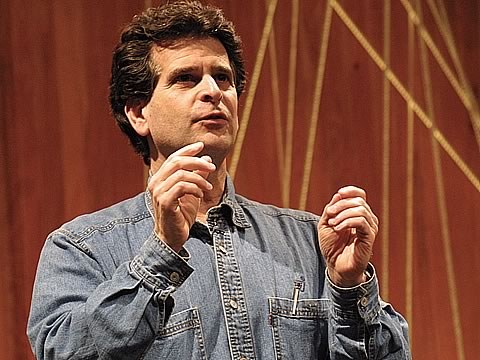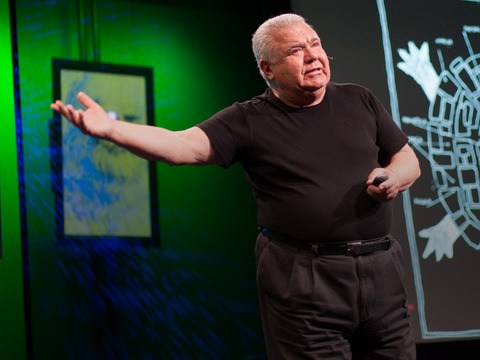We have known for a long time that air pollution kills people. We also know that a climate emergency is happening. These are hardly motivating facts to start a conversation, but I'm actually here to share good news.
For the first time in our lifetimes, a big detox of transportation is possible, despite the many problems we have, or perhaps because of them. The lockdowns of 2020 have been tough, but they also give us a glimpse of life without the usual noise, congestion and pollution, confronting us with questions about the way we live. The tailpipe is a symbol of our worst habits -- habits that we have normalized for too long: the burning of 100 million barrels of oil every 24 hours and the extraction behind that oil, the fumes choking our cities, the greenhouse gases going up in the atmosphere and overheating our planet. None of that is normal, nor is air pollution, which can shorten life expectancy by up to 10 years, depending on where you live. This is also a matter of environmental justice because air pollution hurts everyone, but it hurts the poor and minorities disproportionately.
The good news is that things are changing. Take cities. First, people around the world are demanding clean air and cities are responding by banning petrol and diesel cars, mostly by 2030 and 2040; over 30 cities and regions are already doing this.
Second, the city space is going through an overhaul. Too much space was given to cars, and cities are reversing this by blocking traffic from certain streets, by giving the streets back to pedestrians, by making the streets greener and safer, especially for children.
And third, cities are also prioritizing active mobility, such as biking and walking. And the pandemic accelerated many of these decisions. From Barcelona to Bogotá, cities are opening spaces for bike lanes, for commuters. Sales of bikes and e-bikes are booming in many places. Paris is pioneering the 15-minute city to put essentials within a walk or a bike ride, all within 15 minutes.
I live in Amsterdam, where a profound transformation is underway. Amsterdam already promotes biking, public transit, walking. So you might be surprised to hear that even in Amsterdam there is a problem with air pollution because of road transportation. That is why the city of Amsterdam has a plan to go emissions-free by 2030. And the plan builds on the idea of an expanding zero-emission zone going from the center outwards in three phases.
By 2022, all buses and coaches circulating in the city center must be emissions-free. By 2025, the zone expands and all public and commercial traffic must be emissions-free. Public buses, coaches, taxis, vans, small, medium and large trucks. That also includes mopeds, ferries and boats. By 2030, the zone expands further, and by then all transportation must be emissions-free, including personal cars and motorcycles. No more tailpipes. And that is just nine years away. Living here and witnessing firsthand how Amsterdam becomes a front-runner of electric mobility is a powerful reminder that the big societal imperative of halving carbon emissions by 2030 goes beyond nudging people away from personal cars.
The systemic change we need requires that all modes of transportation go emissions-free powered by renewables, and we have to achieve that while making sure that our needs are met as citizens and as business. And to do this, we need to electrify pretty much everything. Cities cannot do this alone, so we need national governments to play a fundamental role too.
The European Union, for example, has CO2 emission standards for vehicle manufacturers, and over a dozen of European countries have set up plans to phase out petrol and diesel cars -- France by 2040, the United Kingdom by 2035. China and California have mandates to accelerate the manufacturing of zero-emission models. California just passed a rule that requires that 50 percent of the sales of trucks in the state are zero-emissions by 2035 and all of them must be zero-emission by 2045. This is a game changer for the trucking industry.
Vehicle manufacturing is shifting towards electrification. Look at some of the milestones, which were unthinkable a few years back. Volkswagen has converted a traditional plant into one that will produce only electric vehicles. Daimler is halting all the development of internal combustion engines. And Tesla is more valuable today than ExxonMobil. This year, public charging plugs hit the one million mark around the world. Fleet owners are shifting towards zero-emission models. Amazon alone has ordered 100,000 electric delivery vans and nearly 90 global companies have joined EV100, an international initiative to electrify fleets by 2030 starting now.
These are still small steps compared to the scale of our oil addiction, but they signal a new direction of travel. What's really exciting is that the technologies we need for this transformation are here today, commercially available, getting cheaper and getting better. Look at batteries. Their cost went down 90 percent in 10 years, and there are new opportunities to repurpose these batteries for energy storage or to recycle them once they wear down.
The race to zero needs capital. So we need more urgency and directionality in the financial industry because it is heavily invested in fossil fuels. To reach scale and speed, we will need clever combinations of finance and policy. Look at what's going on with electric buses. China has a fleet of 420,000 electric buses compared to 600 in the entire United States. To put that into perspective, Santiago de Chile alone has 455 electric buses, and growing, thanks to an ingenious financial arrangement. Africa now has its first manufacturing plant of electric buses. And P4G, a global initiative, is working with emerging economies that want to scale up the electrification of buses. Colombia is first in line, designing a fund of 2.2 billion dollars to electrify 6,000 buses over time.
There is, and there will be, resistance to change. There is even an inability to imagine that change is possible. In reality, change happens exponentially. Look at what happened to solar energy. Exponential change can bring turmoil if the decline of old industries is not managed. It can bring economic dislocation and job disruption. So wouldn't it be wiser to prepare and design just transitions now rather than later?
Here's the bottom line. The end of internal combustion engine is within sight. The question is no longer whether this will happen, but when. Ten years? Twenty years? It depends on us and the choices that we make this decade. So now is the time to go bigger and faster towards a future without a tailpipe, a future where we can meet our transportation needs and have people-friendly streets, a future with a thriving economy and clean air, a future we choose for the climate and for our health.
Thank you.
